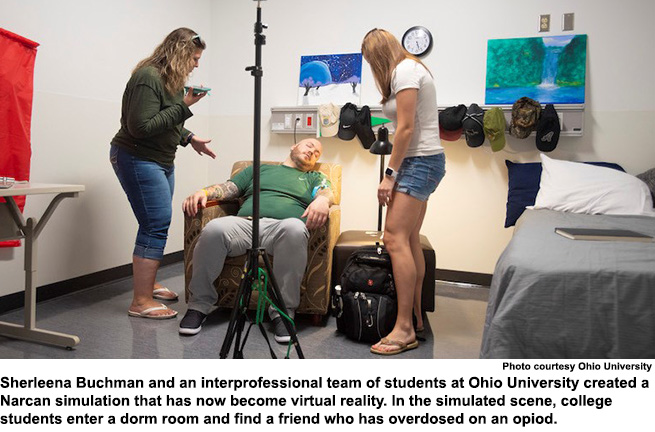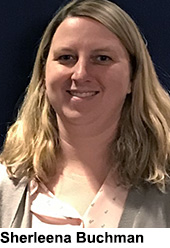Will become teaching tool for nursing students.

In addition to educating students on the use of Narcan, Sherleena Buchman wants the simulation to help alleviate the stigma of addiction.
 Sherleena Buchman, an assistant professor at Ohio University’s School of Nursing in Athens, Ohio, USA, watched as a Narcan simulation she created with a 12-student interprofessional team became reality in April 2018. Now it has become virtual reality.
Sherleena Buchman, an assistant professor at Ohio University’s School of Nursing in Athens, Ohio, USA, watched as a Narcan simulation she created with a 12-student interprofessional team became reality in April 2018. Now it has become virtual reality.
The simulation features two college students who enter a dormitory room to find a friend suffering from an opioid overdose. The scene unfolds with the students calling 911 and administering Narcan to counteract the overdose.
Over the summer, the simulation was filmed again, this time with the help of Eric Williams in the university’s Game Research and Immersive Design (GRID) Lab. With cameras dotting the area, a 360-degree video was produced to immerse a viewer into a virtual reality (VR) simulation of the scene.
“Using virtual reality goggles, the person can turn around and see everything. It’s really amazing,” Buchman says. “When you look down, you can see them going through the bag looking for Narcan. If you hear a noise, you can turn your head to look in that direction to see what’s going on. It’s just like you were physically in the room.”
Buchman said the more real the simulation can be made for the viewer, the more it becomes a part of them and the more they can learn.
The VR simulation is currently not available outside of the GRID Lab as more research is being conducted. Eventually, Buchman plans to have the simulation available on any smartphone.
“It leaves you with a feeling of ‘Wow, I just watched someone overdose and watched them come back,’” Buchman says. “The reactions viewers gave were interesting and emotional. They showed compassion as we sometimes don’t consider the side of the actual person who overdosed and the feelings of those that found them.”
Buchman said in addition to educating on the use of Narcan, she wants the simulation to help alleviate the stigma of addiction.
“If it were a patient with diabetes, we wouldn’t say ‘Joe the diabetic.’ We would say, ‘Joe, who has diabetes.’ We want to educate people through this piloting process. That’s not Joe the addict, that’s Joe who has an addiction problem.”
Seeing the simulation come to life in virtual reality has been fulfilling for Buchman.
“It’s been a pretty amazing journey. I love technology, simulation, and education, and the students today have grown up with technology in their hands. This is a way we can impact them that’s familiar. It’s amazing to think that we can help create something that will help patients and help our community by impacting this generation of students.” And, she notes, community members who see the simulation will be able to carry out the actions on their own.
While the content of this simulation was designed for laymen, Buchman says there are plans to design another version specifically designed as a teaching tool for nursing students. RNL
Joe Higgins is a writer for the dean’s office, College of Health Sciences and Professions, Ohio University.